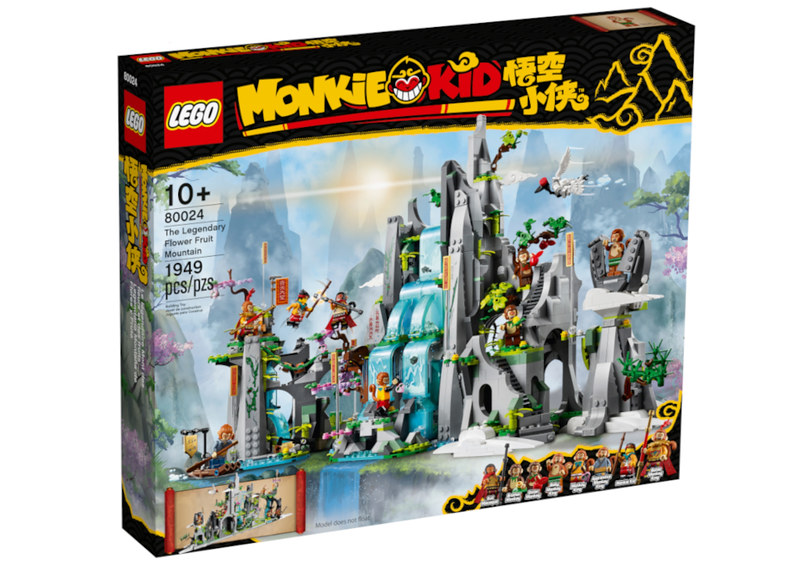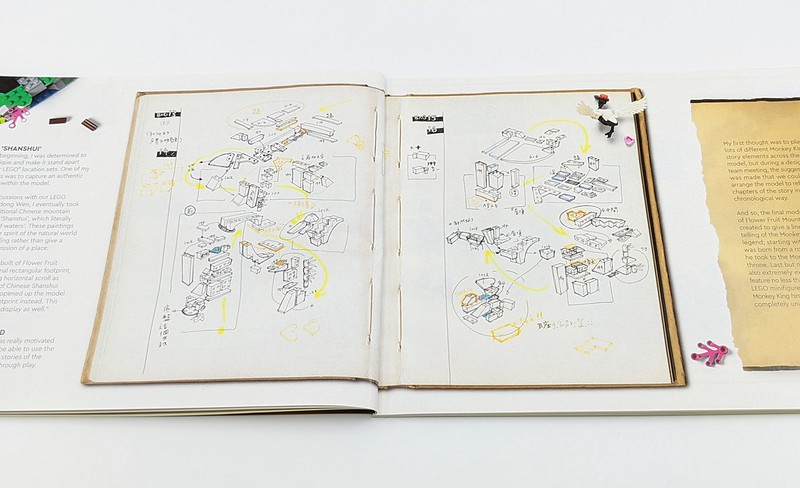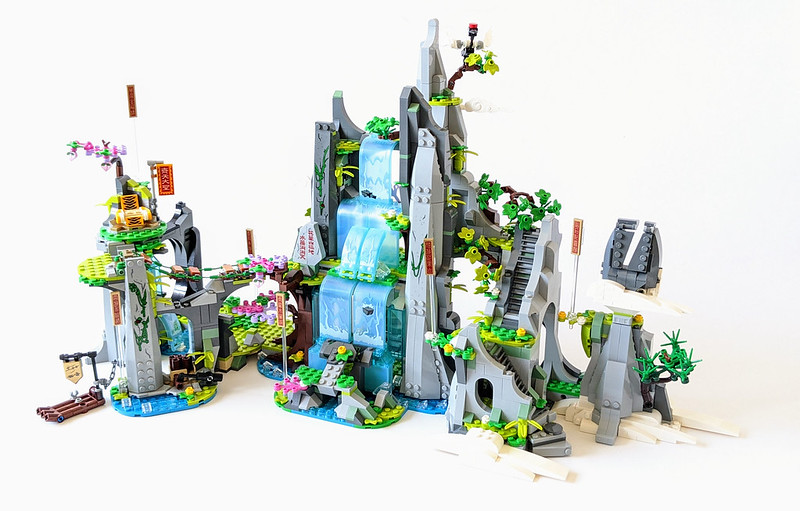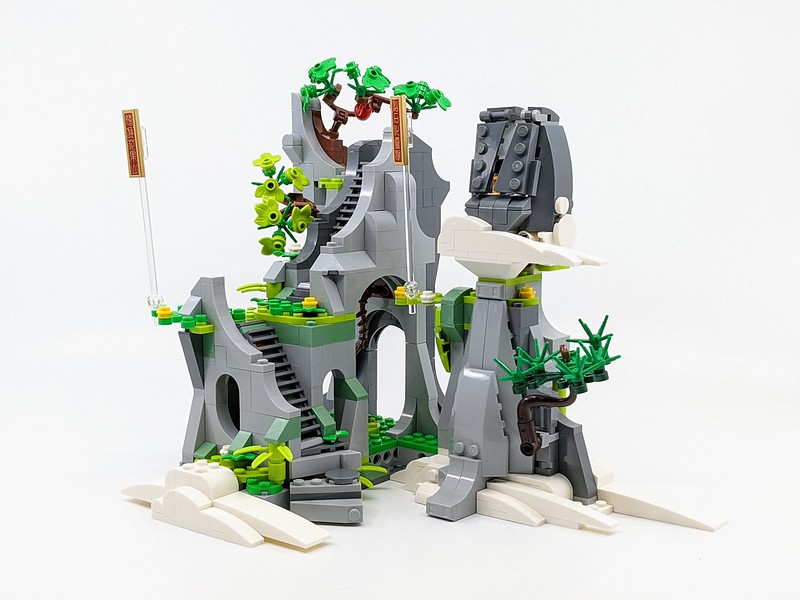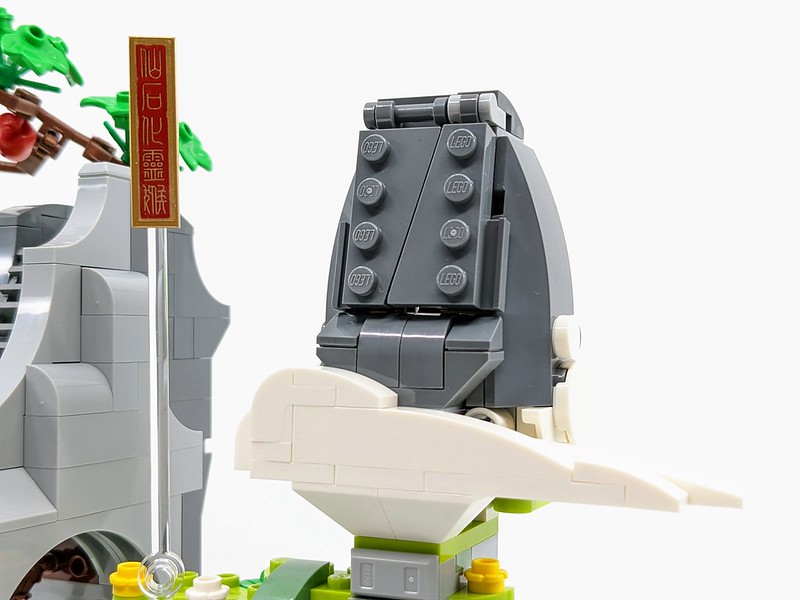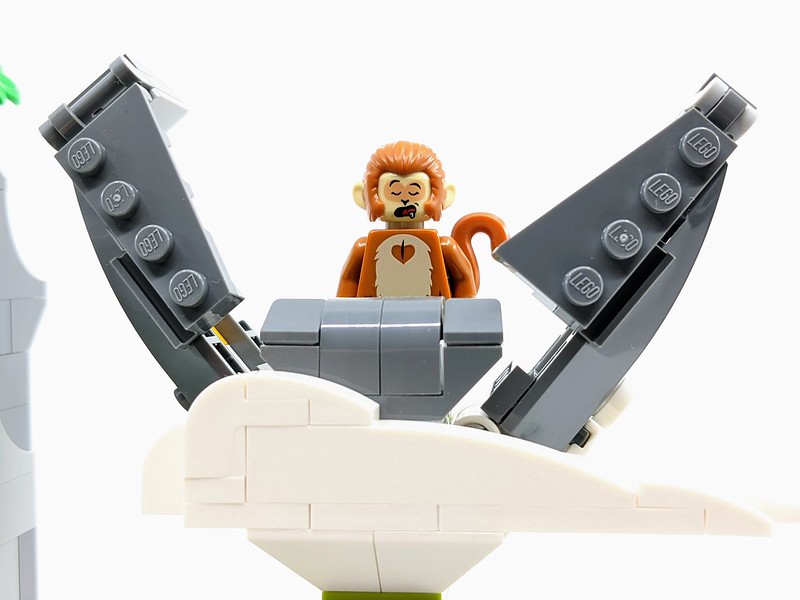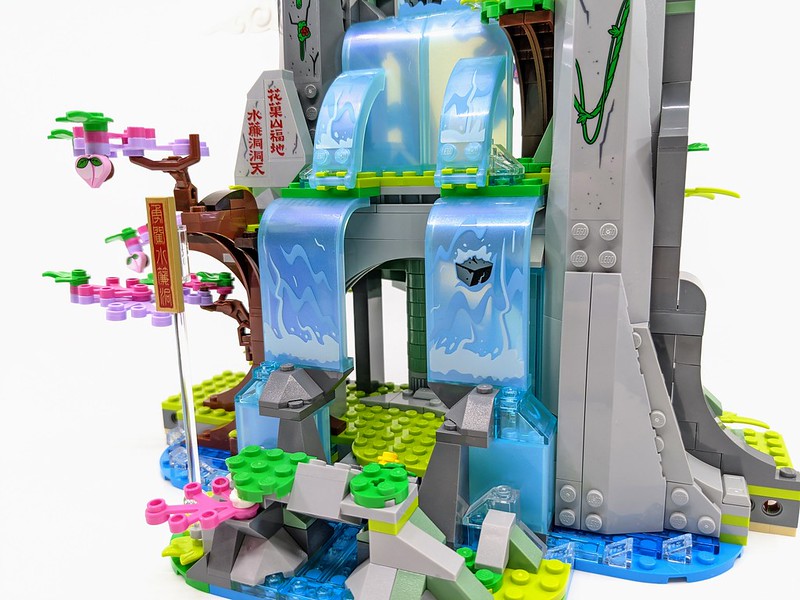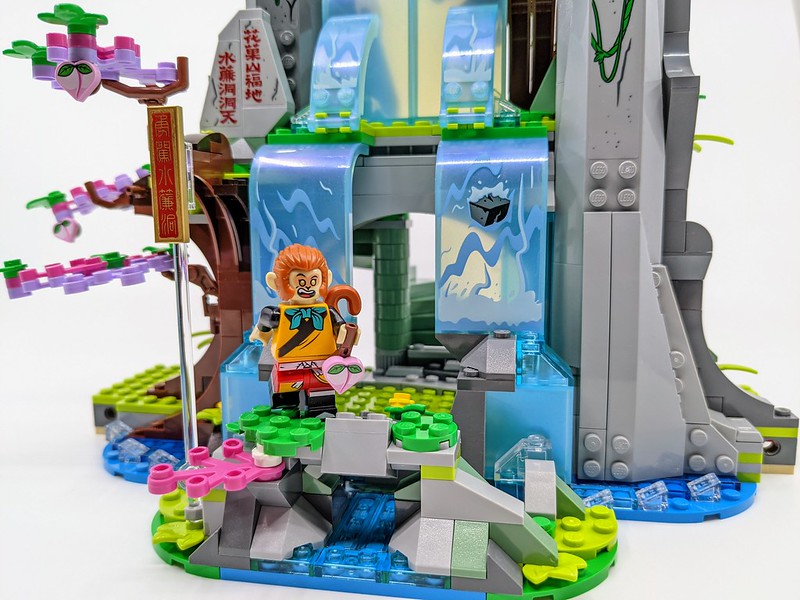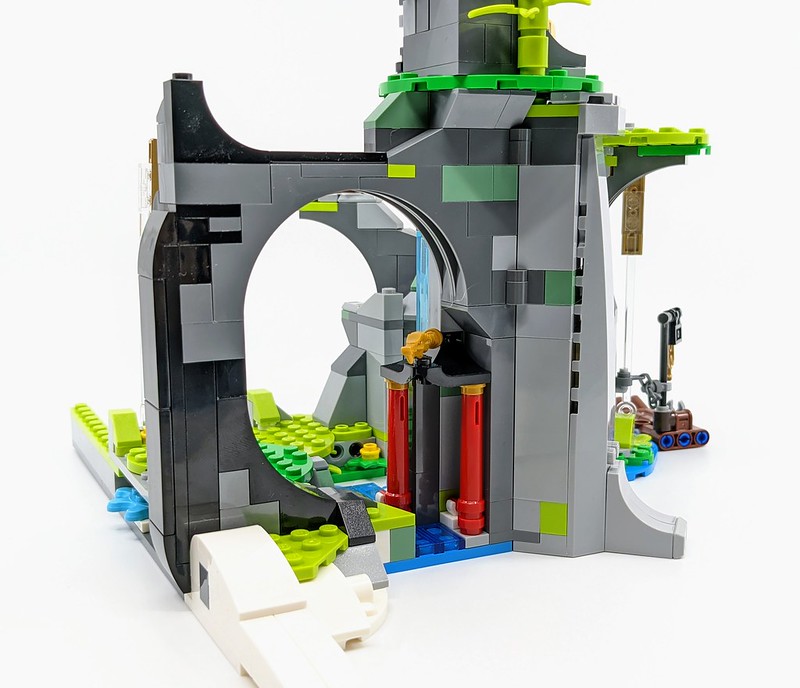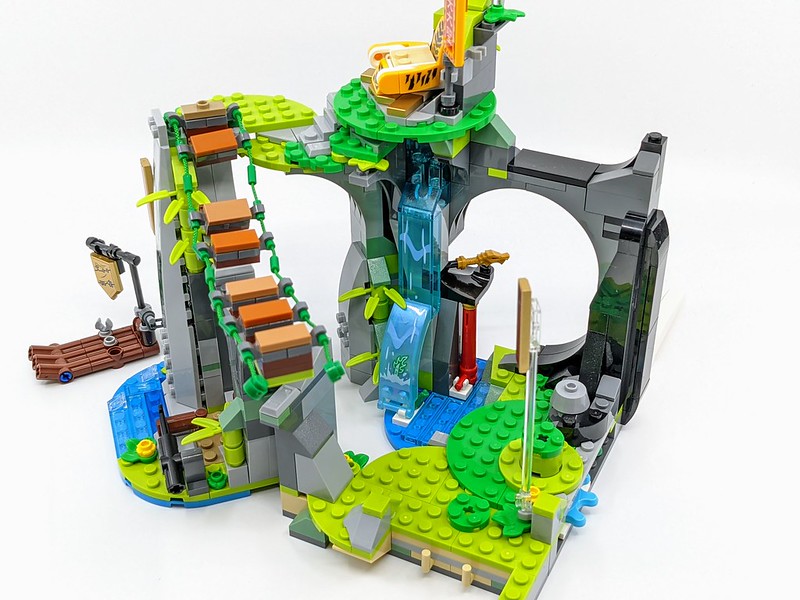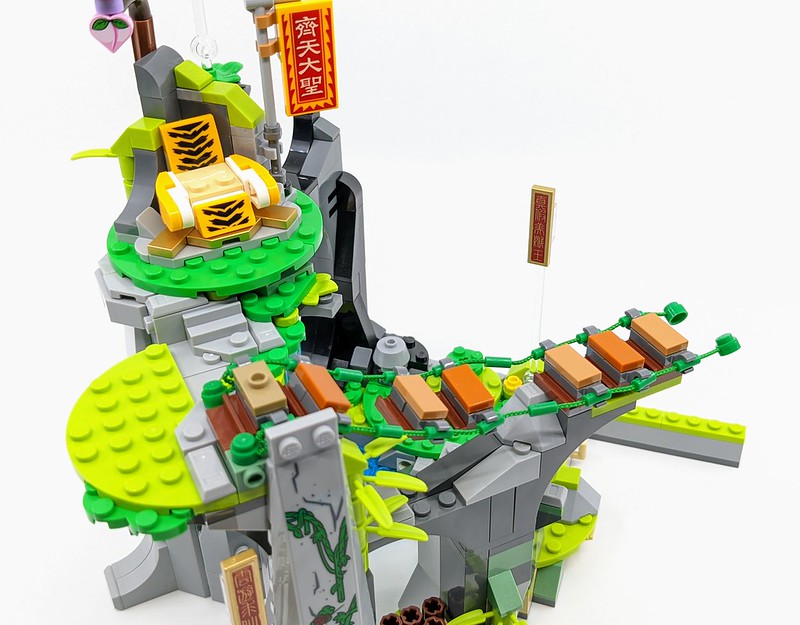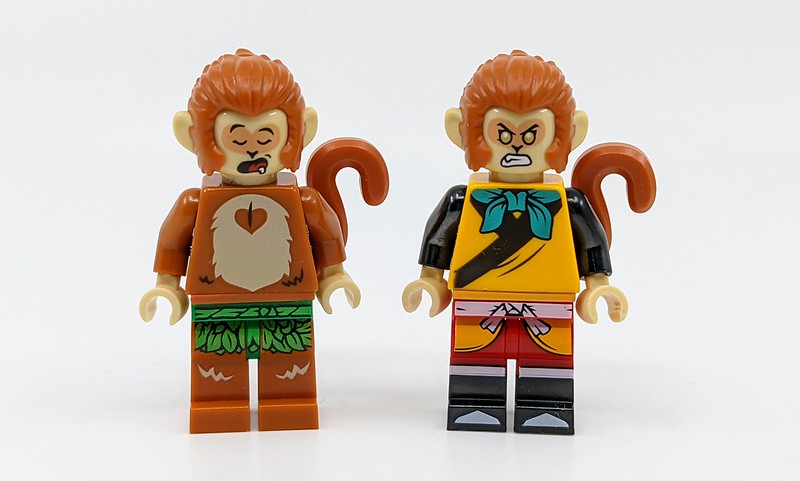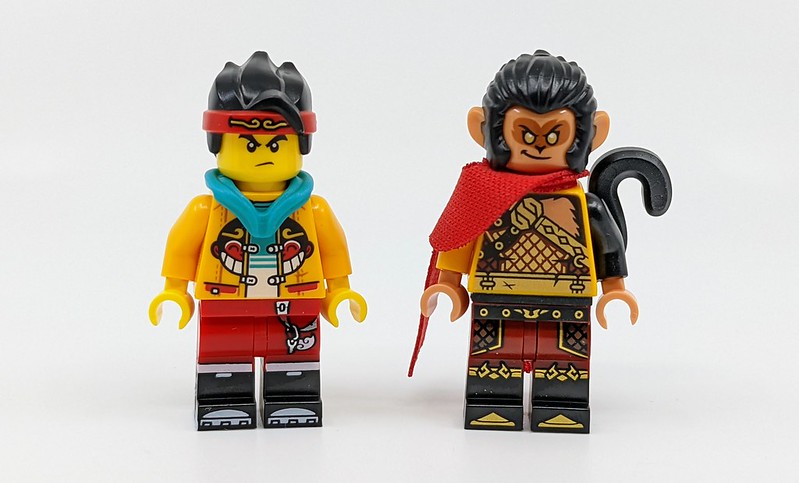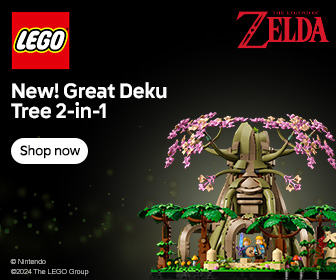In the world’s before Monkey, primal chaos reigned. The four worlds formed again and yet again. The pure essences of heaven, the moisture of the earth, the power of the sun and the moon, all worked upon a certain rock, as old as creation. Soon a mysterious egg appeared and from this stone egg a monkey was born and the legend of the Monkey King began. That ancient rock would become known as the Flower Fruit Mountain or Mount Huaguo, the birthplace of the legendary Sun Wukong – The Monkey King. This cheeky ape gained his title by bravely passing through the mountain’s mighty waterfall and entering a hidden cave. It’s also the inspiration for an interesting new addition to the LEGO® Monkie Kid range. Flower Fruit Mountain tells the legend of Monkey King, from being born of an egg on the mountain top to taking the throne as the Monkey King and passing this legend to a new generation. As I continue my reviews of the latest LEGO Monkie Kid sets, it’s time to take a look at The Legendary Flower Fruit Mountain.
Product Description
Children can bring the legend of the Monkey King to life as they build this detailed LEGO® Monkie Kid™ model of the iconic Flower Fruit Mountain (80024). Every section of the premium-quality toy playset tells a different story, from how he was born to how he became king of the monkeys, with features such as an opening rock to reveal the Monkey King and a buildable waterfall that opens to allow entry to the hidden mountain cave. There are 8 minifigures, including 4 different versions of Monkey King to play out specific legendary tales.
- Set Name: The Legendary Flower Fruit Mountain
- Set Number: 80024
- Pieces: 1949
- RRP: £159.99/$169.99/169.99€
- Measurements: Measures over 13.5 in. (34 cm) high, 27 in. (68 cm) wide and 10 in. (25 cm) deep
- Minifigures: Monkie Kid, Evil Macaque, Brother Monkey, Sister Monkey and 4 versions of Monkey King (Baby, Classic, Apprentice and Battle)
- Availability: LEGO.com exclusive from March 1st
The Build
Unusually for a set that would be considered a standard release compared to may of the special sets, the first of instruction booklets is filled with a little background on the creation of the set. This includes a few concepts designs of the set and some snippets of information from the set’s designer. I’ve made no secret of my love of behind the scenes content being included with sets. They make them feel a little special and with this set, also helps to flesh out the legend of the Monkey King. There are three instruction booklets included for the set, which come packaged in a new carded folder. This is another effort by the LEGO Group to cut down on plastic waste.
A mountain doesn’t sound like the most exciting subject for a LEGO set but I can safely say it certainly is. Most of the Monkie Kid sets have thus far focused on vehicles or mechs, but this takes the story back to the source. Making it feel like the most traditional of the sets from the theme. The story of the Journey to the West has been interpreted in many forms, but each uses the mountain as a key component of the story. After all, it is where the legendary Monkey King is born.
The magnificent Flower Fruit Mountain is created by three separate sections, which can be clipped together, this results in a rather large set, once it’s all fitted together. Although it’s footprint is quite large, it’s been kept quite narrow so it can be easily displayed as well as being inspired by the glorious paintings so ingrained with the ancient history of Asian culture. Its purpose is primarily a playset but it does look quite impressive so actually makes a great display piece. This is largely thanks to the build of the set. It may feature a mass of grey pieces, but they are broken up with splashes of colour, such as plants, the odd tree and more unusual things like a tiger print patterned throne.
The left-hand side of the mountain is where not only the story but the build begins. This section includes a cloud enveloped mountain peak, upon which sits a stone egg. This includes a simple play function, which lets you crack open the egg to reveal the infant, Monkey King. Pull a small lever-like platform, will cause each side of the egg to fall open and reveal the sleeping Monkey King. The rest of this section includes a winding stairway, created by a series of ladder plates, which connect in an interesting way and a couple of grassy platforms.
The middle section of the mountain is by far the most impressive, both visually and in terms of the build experience. It’s also the largest of the three different sections and the next stage of the Monkey King’s story. Your eyes will be drawn to the large waterfall, which splashes down the mountain via a trio of falls. These are created from a mix of fairly new elements, which are panels with a curved top. These are paired with other smaller panel bricks all in a new transparent opal blue colour. These have a slight glittery shimmer to them, most of these pieces also have stickers on them. The combination of the base element and the stickers looks really nice. The bottom area of the fall can be parted to reveal the hidden cave. This is achieved by a simple see-saw platform. Pushing down on this pushes the waterfall panels apart. The story tells of the Monkey King bravely rushes through the Hauguo Falls to enter the cavernous area it hides. This impressed the rest of Monkey’s tribe and secured his destiny as the Monkey King.
To the left of the mountain is a Flower Fruit Tree that is tipped with purple and pink leaves, along with the actual fruit which is created from heart-shaped printed pieces. At the very top of the waterfall is a brick-built crane. The crane signifies immortality in Chinese culture, which is the power Monkey gains after a run-in with the heavenly gods. Inside the mountain is a variety of caves, each connected by a spiral stairway. There are also a number of hidden pieces related to the story of the Monkey King.
As the story continues, the build moves over to the final right-hand section. This has quite a lot of different things going on and looks a lot busier compared to the other two sections. Two columns of rock rise up from the watery base of the mountain, where Monkey King continues his training on a small wooden raft. He built this himself after cropping the wood from a Flower Fruit tree. The columns are connected by a wooden bridge. This is the only part of the build, I felt could have been improved a little. As the section is built separately from the central section, the end of the bridge isn’t actually connected to anything, so the studded ends of the rope elements just dangle. Not an overly bad issue in an otherwise outstanding set.
The bridge leads to the final aspect of the Monkey King’s story, the throne of the mountain. I’m not sure why this has a tiger print throne and it looks a little out of place but also matches the cheeky nature of the Monkey King’s character. You’ll notice there are floating panels dotted throughout the set. These act as markers to key aspects of the Monkey King’s story. From being born of an egg, eating the fruit of the Flower Fruit tree, passing through the waterfall, crafting a raft and taking on the Evil Macaque to finally rising to the becoming the legendary Monkey King.
Behind the rocky columns is a strange darken section. Here the bricks switch from grey to black and represent the lair of the Evil Macaque. It’s also where MK or the Monkey King can battle the pretender to the throne. This is represented by a splat gear system that twists a couple of small columns. When Minifigures are placed upon them, the twisting motion makes them duke it out. Once each of these sections is complete, they can be easily clipped together. The join isn’t super stable, but once connected, the whole set isn’t really meant to be moved around a great deal.
The Minifigures
As if the main build wasn’t impressive enough, the set features 8 Minifigures, many of which reflect the different stages of Sun Wukong’s journey from simple ape to legendary king. All versions of the Monkey King and his chums use the new hairpiece, which was introduced with another version of the Monkey King from the 19th series of LEGO Minifigures. Due to the different variant Minifigures, there are two new colours of this element now available. The same can be said about the tailpieces, these match the colour of each Monkey, with some having the slightest splash of the colour on the waist strap, to match the torso colouring.
As mentioned half of the Monkey Minifigures represent a single character of the Monkey King. These include the Baby Monkey King, who emerges from the egg. He’s wearing a simple leafy loincloth and has a great sleepy expression. The next stage of the Monkey King’s life is represented by the simply named Monkey King. Here he looks a lot more like his final form, with a light orange tunic, red trousers and a jade neckscalf.
On his journey to enlightenment, Monkey King must learn the wisdom of the mountain and this is shown in his Apprentice outfit. This is one of my favourites, as it looks like traditional Asian wear. This kits the Monkey King out in a blue tunic, with a golden sash tied around the waist. It almost has a Jedi vibe about it. The Monkey King’s final form is the most traditional and also the most similar to previous versions and other sets. This is noted as the Battle Monkey King. He has a far more detailed outfit on, which also included a golden armour section on the shoulders, a material cape and a ribbon-like flourish on his head.
The Monkey King is not the only ape to dwell within the mysterious Flower Fruit Mountain. Some of his simian neighbours are included in the form of Brother and Sister Monkey. These both use the classic short legs, giving them a smaller stature compared to the other characters. They also make use of a darker brown version of the monkey hairpiece and older-style tail elements. They both have simple print detail on the torsos and each feature cheeky expressions.
One of the final two characters represents the new generation of the Monkey King legend. Monkie Kid or MK has a similar look to the Monkey King, thanks to a similar colour scheme used for both their outfits. The version of MK here includes the new logo jacket and jade hood element. As well as the previously used battle face-painted head. The final character is called the Evil Macaque, which appears to be based on a similar character from the legendary story, dubbed the Six Eared Macaque. This character believes he is the true Monkey King and disguises himself to look like Sun Wukong. The Minifigure looks very similar to Monkey King, with a lot more black in his outfit, a black-haired version of the monkey hairpiece. He also has an additional material cape, swept over his shoulder.
Overall
I cannot recommend this set enough, it was a delightful looking set but more importantly, it’s great fun to build. I love how elements are positioned and layered to give the mountain a very natural look. Plants, grass and watery sections are woven into the tapestry of the rocky section. The way the story of the Monkey King has inspired the various play features has also been greatly implemented. They don’t feel shoehorned in either, they are relevant to both the story and the set. It really does like a painting, thanks to the blend of colours and textured appearance. The Minifigures add to the overall impressive nature of the set, I like the route of using the set and Minifigures to retell the story of the Monkey King. This story is an important part of Chinese culture, being able to experience it in this unique way will really connect with young and newly emerging LEGO fans from that region. Elsewhere in the world, we may not connect to the Journey of the West story in the same way, but a lot of people have some experience of it. Enough experience to appreciate this incredible brick-built take on the legend.
Coming March 1st: UKIrelandUSCanadaGermanyDenmarkAustraliaNew Zealand
This set was provided to BricksFanz by the LEGO Group for purposes of review. The thoughts within this review are that of BricksFanz and do not reflect those of the LEGO Group. Providing the set for free does not guarantee a favourable opinion of the set.


